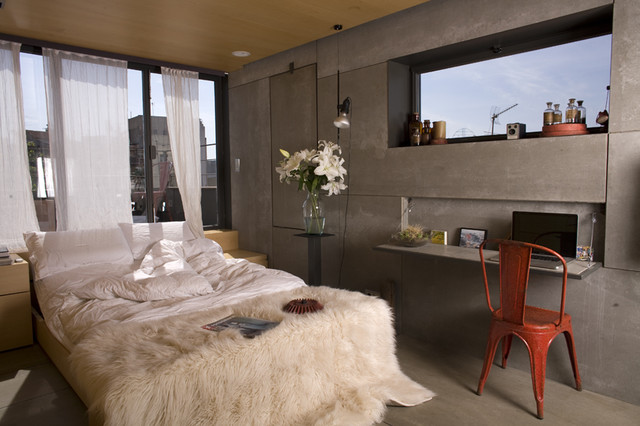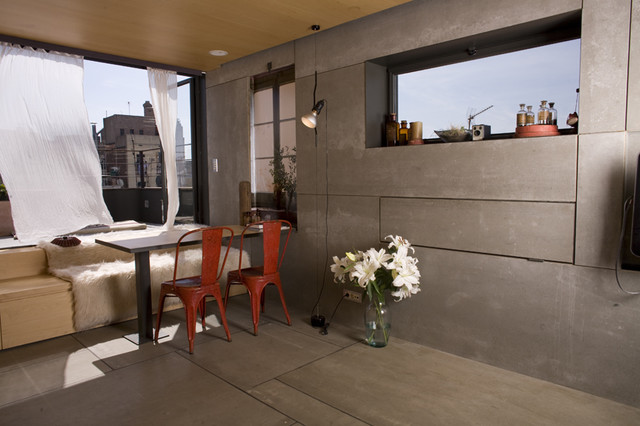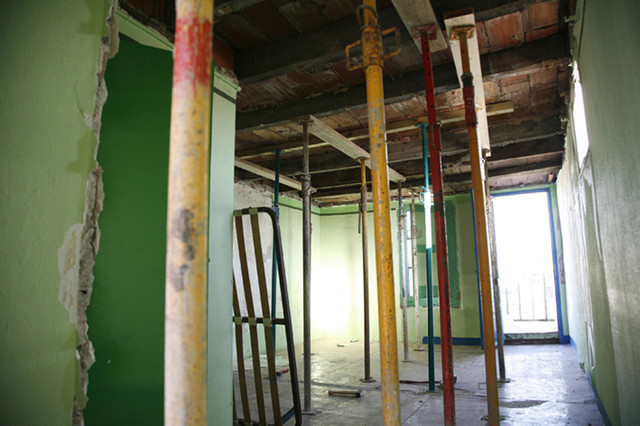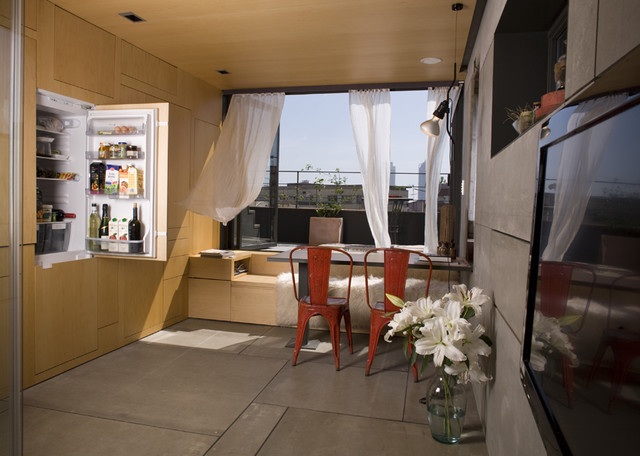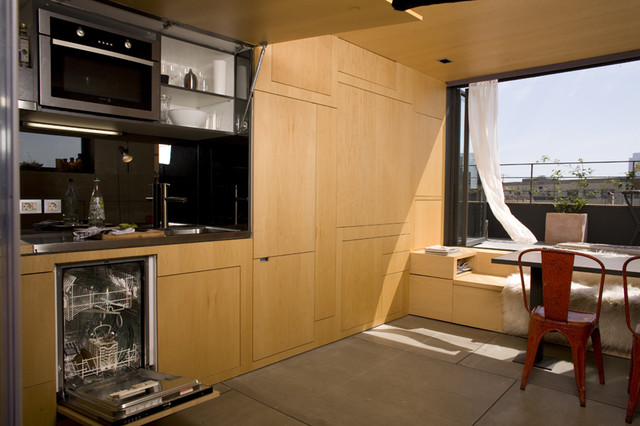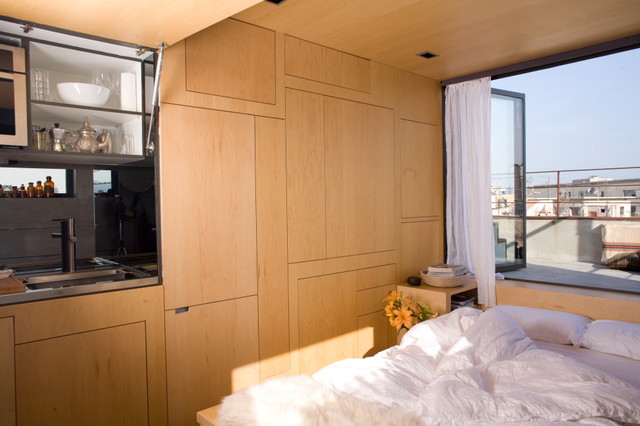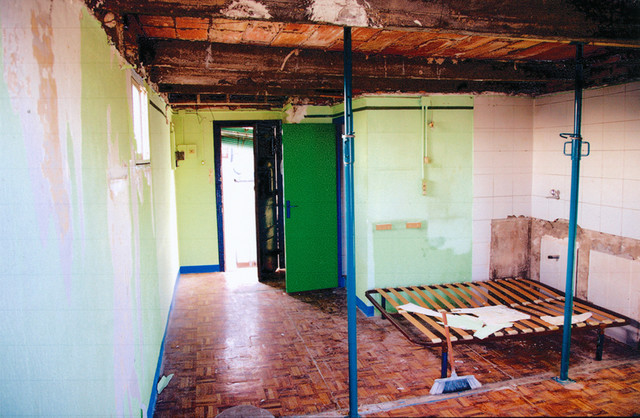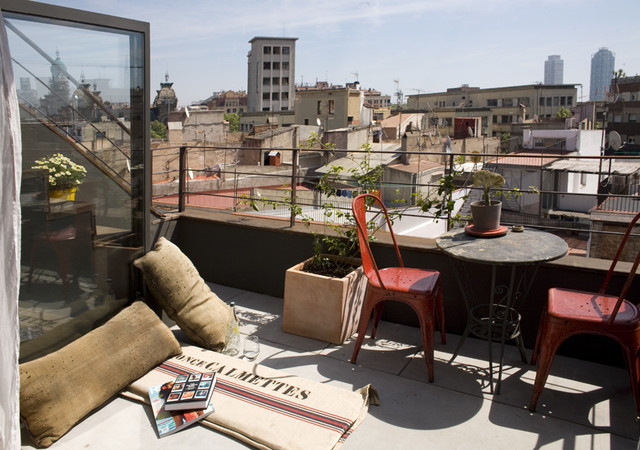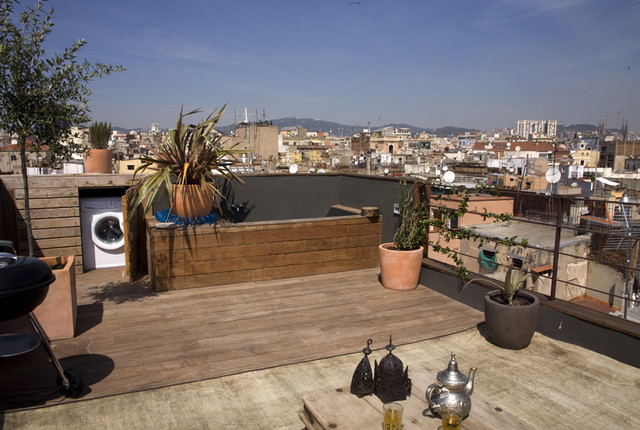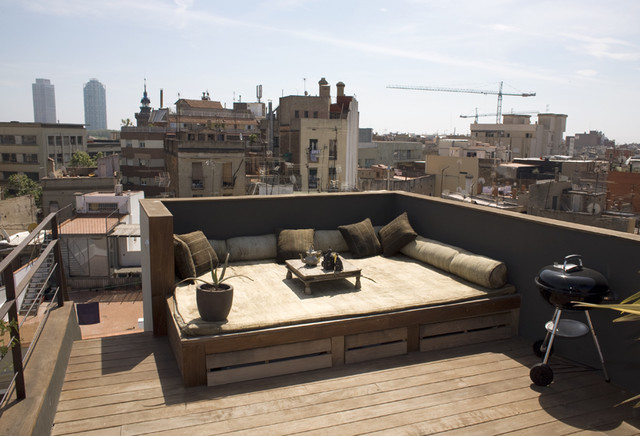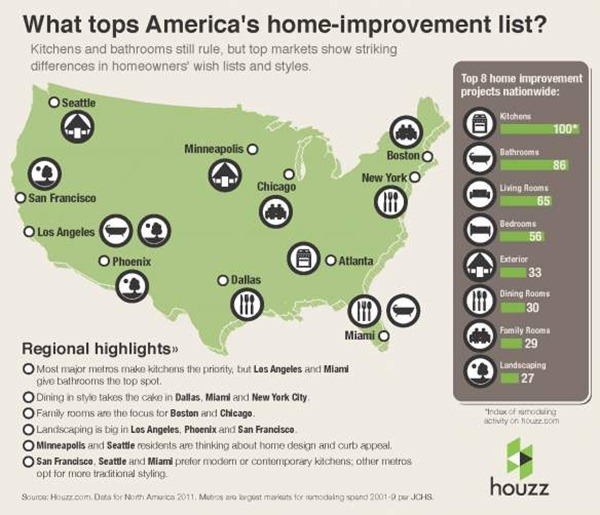Can a 260-square-foot space actually be livable? With hidden functionality and fold-out panels, it sure can
It’s hard to say what’s more striking about this unique living space in Barcelona — the 360-degree rooftop view, the outdoor bathtub and beautiful terrace, or the cleverly hidden panels that allow for a fully functional living space. Photographer Christian Schallert happened upon this space randomly and fell head over heels for its great location and stunning roof deck. But at just 260 square feet, the tiny and barren space left plenty to be desired.
He and architect Barbara Appolloni, a friend, came up with a unique design that allows the apartment to function in different modes — each appliance and piece of furniture is tucked into a hidden panel. By opening and closing panels, Schallert can adjust the apartment to his needs of the moment, whether he’s cooking, taking a shower or sleeping.
Because the apartment is such a small space, there was no other option than to make it as flexible as possible. Schallert worked with Appolloni to come up with a practical design that would work for his lifestyle. "I basically had to write an exact list of all my belongings that would have to fit into the apartment," Schallert says.
The result: Everything is within reach and in its assigned space. A fold-out panel serves as a desk, panels pop open to reveal storage, and the bed pulls in and out of a large slot as needed. "It’s almost like living in a big closet," Schallert says.
Schallert lived in this space for two years. (He still owns the home but currently lives in another part of the city.) He traveled and worked a lot, so he didn’t spend much time there. When he woke up in the morning, he immediately pushed in the bed to create a living space to welcome him home at the end of the day.
The panels and floor on this side of the unit are made of a mix of compressed wood and concrete called Viroc. The material has an industrial look but isn’t as hard as concrete. It doesn’t get too cold in the winter and works well in the summer too.
BEFORE: Schallert wasn’t looking for an apartment when he found this space. After someone stuck a sticker on his photography studio’s window about it, he randomly decided to take a look. "I fell in love with it even though it was literally only a couple of square meters where pigeons lived," Schallert says. "I just loved the old building and this incredible 360-degree view of Barcelona."
AFTER: Six months later, Appolloni and Schallert had transformed the unit, packing it full of multiple-use concepts. "It’s like having one house packed into a single room," he says.
The kitchen panel is all tucked into one side of the space. An integrated fridge, an electric stovetop, a sink, a freezer, a microwave and a dishwasher have assigned spaces. At mealtimes, the dining table is pulled out along with all the kitchen appliances.
Afterward, everything is cleaned up and tucked away. The bed is pulled out, the TV turns from the wall toward the bed and the room changes into a large hotel-style bedroom.
This remodel took about six months to complete. Because of the nature of the project, Schallert and Appolloni had to get some specific construction licenses.
BEFORE: Although Schallert initially envisioned living in a dream loft in Barcelona’s trendy el Born district, he loved the difficulties that this bare-bones space presented. "I took the challenge and changed this pigeonhole into a James Bond kind of apartment," he says.
AFTER: The toilet is the only private space in this apartment. It’s in a small room with a little window, behind a hidden door next to the sink. The shower glass cube and sink stay out of the way of the kitchen and bedroom modes against this wall.
A 65-square-foot elevated balcony is just outside the bed area; the bed is pushed there when it’s stored away. When it’s time to pull it out again, Schallert simply pulls on a leather strap attached to the end of the bed frame.
There’s another 200 square feet of terrace space up a flight of stairs from the smaller balcony. Schallert installed an outdoor tub for two and a convenient washer and dryer here. Barcelona is a sunny city, so it made sense to make the most out of the outdoor space.
A big outdoor couch provides the perfect place to enjoy the Spanish sun. Schallert occasionally hosted dinner parties on this terrace for up to five people.
Although this space worked for Schallert, he acknowledges that it isn’t the best setup for everyone. Since he was single and able to keep all of his work things at his office (just around the corner), it was easy for him to keep everything neat and clean. "You’re practically forced to be organized. Otherwise it’s one big mess in five minutes," he says.
